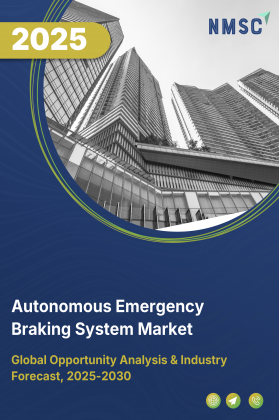
Commercial Vehicle Telematics Market by Component (Hardware, Software, and Services), by Vehicle Type (Light Commercial Vehicles, and Others), by Application (Fleet Operations Management, and Others), by Technology (Cellular, Satellite, and others), by Deployment Model (Embedded OEM, Aftermarket Installation, and Others), by Sales Channel (Direct Sales, and Indirect Sales) End-User Industry (Transportation & Logistics, and others)– Global Opportunity Analysis and Industry Forecast 2024-2030.
Commercial Vehicle Telematics Market Overview
The global Commercial Vehicle Telematics Market size was valued at USD 28.91 billion in 2023 and is predicted to reach USD 65.91 billion by 2030 with a CAGR of 12.5% from 2024-2030. The market focuses on the strategic integration of telecommunications and information technology to enhance the management and performance of commercial vehicle fleets.
This market encompasses solutions and services that use GPS tracking, onboard diagnostics, and various sensors to gather real-time data on vehicle location, speed, fuel consumption, and engine health. Fleet managers receive this data, allowing them to optimize routes, boost fuel efficiency, improve safety, and ensure regulatory compliance. By implementing telematics, businesses achieve greater operational efficiency, reduce costs, and refine their overall fleet management strategies.
Market Dynamics and Trends
The worldwide rising road accidents is driving the commercial vehicle telematics market growth due to the need for real-time monitoring of vehicle location, speed, and driver behavior. Telematics systems provide alerts for risky driving actions such as speeding and harsh braking, enabling fleet managers to intervene promptly and improve safety.
According to the data published by the World Health Organization (WHO), approximately 1.19 million people die each year as a result of road traffic crashes. Leveraging telematics allows companies to ensure compliance with safety regulations, protect lives, and minimize accident-related risks and liabilities. This increasing focus on safety and risk management is propelling the adoption of telematics solutions across the commercial vehicle sector globally.
Moreover, the growing technological advancements in fleet management is another factor driving the commercial vehicle telematics market demand by enabling real-time tracking, predictive maintenance, and optimized route planning. As companies seek greater control and efficiency over their fleets, the development of advanced telematics solution becomes essential, leading to substantial growth in this sector.
For instance, in September 2023, Mullen Automotive launched Commercial Pulse, an advanced in-house fleet telematics solution designed to optimize vehicle diagnostics and fleet management for its commercial vehicles.
Similarly, in July 2024, ZF's Commercial Vehicles Solutions (CVS) division launched a new trailer telematics solution aimed at enhancing fleet management for manufacturers, rental companies, and fleet operators. These innovations highlight the growing emphasis on leveraging advanced telematics to drive efficiency and performance in commercial vehicle fleets worldwide.
Additionally, the growing vehicle production across the globe further drives the market by increasing the demand for advanced fleet management solutions for ensuring vehicle safety. According to the Association of European Automobile Manufacturers (ACEA), in 2022, the global production of motor vehicles reached 85.4 million units, reflecting a 5.7% increase from 2021. This surge in vehicle production reflects the increasing role of telematics in supporting the safety and efficiency of fleets, thereby driving the commercial vehicle telematics market expansion globally.
However, the high initial investment required for purchasing and installing telematics systems in commercial vehicles is restraining the market growth by presenting a significant barrier to adoption, particularly among smaller companies.
On the contrary, the integration of artificial intelligence (AI) and machine learning (ML) with video dashcam systems is expected to create future opportunities by enhancing fleet management capabilities.
These advanced technologies enable real-time analysis of video footage, improve driver safety, optimize route planning, and provide actionable insights into vehicle performance. As AI and ML technologies advance, their application in video dashcams will offer more sophisticated and efficient solutions, driving growth and innovation in the market.
Market Segmentations and Scope of the Study
The commercial vehicle telematics market report is segmented on the basis of component, vehicle type, deployment, application, end-user industry, and region. On the basis of component, the market is segmented into hardware, software, and services. On the basis of vehicle type, the market is classified into light commercial vehicles (LCVs) and medium & heavy commercial vehicles (MHCVs). On the basis of deployment, the market is distributed into cloud-based and on-premise. On the basis of application, the market is divided into fleet management, safety and security, vehicle tracking, and driver assistance. On the basis of end-user industry, the market is distributed into logistics and transportation, construction, and others. The regional breakdown includes regions such as North America, Europe, Asia-Pacific, and the Rest of the World (RoW).
Geographical Analysis
North America dominates the commercial vehicle telematics market share and is expected to continue its dominance during the forecast period. This is attributed to the surge in car accidents in the U.S. that increases the demand for advance telematics systems to enhance vehicle safety and reduce accident rates.
The data from the National Safety Council states that in 2022, 46,027 people died in motor-vehicle crashes in the U.S. compared to 42,338 in 2020. In response to this alarming increase in fatalities, telematics systems offer real-time monitoring of driver behavior and vehicle conditions, enabling early detection of risky practices and timely interventions. As a result, this adoption of telematics solutions continues to drive market growth in North America.
Also, the presence of key market players in the region such as NEXCOM, Nauto, and Samsara Inc., further drives the commercial vehicle telematics market by fostering competition and innovation. These companies introduce advanced telematics solutions, offer comprehensive support services, and continuously enhance their technology to meet the evolving needs of fleet operators.
For instance, in October 2023, Nauto launched a new telematics system designed for commercial fleets, integrating vehicle tracking, utilization monitoring, and maintenance planning into a single platform. The solution aims to address common challenges faced by commercial fleets, such as high collision rates, driver turnover, and rising operational costs. This ongoing innovation and support from leading companies are crucial in driving the global expansion of the commercial vehicle telematics market.
On the other hand, in the Asia-Pacific region, the commercial vehicle telematics market trends is experiencing steady growth driven by the rising production of commercial vehicles, that creates a greater demand for effective fleet management solutions. As manufacturers increase production to meet rising transportation demands, fleet operators are turning to telematics systems to monitor vehicle performance, optimize routes, and enhance safety.
According to the data provided by the International Trade Administration (ITA), China holds the world’s largest vehicle industry by both annual sales and manufacturing output, with domestic production expected to reach 35 million vehicles by 2025. This surge in vehicle production encourages companies to adopt telematics technology, leading to significant growth in the market.
Moreover, the implementation of initiatives by the Indian government to grow telematics industries further drive the market by promoting the adoption of advanced technologies through incentives, subsidies, and regulations. These initiatives encourage fleet operators to integrate telematics solutions for enhanced safety, compliance with emissions and safety standards, and improved operational efficiency.
For instance, the Union Budget 2022 in India announced several initiatives to promote sustainable growth in the logistics and telematics industries. As governments implement policies that support technological advancements and smart transportation infrastructure, the demand for telematics systems increases, boosting market growth and accelerating the development of innovative solutions.
Competitive Landscape
Various market players operating in the commercial vehicle telematics industry include Geotab Inc., Samsara Inc., Verizon Connect Inc., Powerfleet Inc., Omnitracs LLC, Motive Technologies Inc. (Formerly KeepTruckin), Teletrac Navman Inc., Webfleet Solutions B.V. (Bridgestone), Lytx Inc., CalAmp Corp., Zonar Systems Inc., Platform Science Inc., Microlise Ltd., ORBCOMM Inc., GPS Trackit LLC, and others. These companies continue to adopt development strategies including partnerships to maintain their dominance in the sector.
For instance, September 2025, Samsara Inc.,Introduced the first “Safest Drivers” recognition list., Partnered with First Student to enhance student transportation safety.. The Expanded AI-powered safety platform with Weather Intelligence, Worker Safety, and Automated Coaching features.
Also, in July 2025, Powerfleet Inc. launched Automated AI Risk Intervention Module for real-time fleet safety intelligence.Partnered with MTN Business in South Africa to deliver AIoT fleet management solutions.
Moreover, August 2025, Motive Technologies, Inc. (formerly KeepTruckin) deepened integration with Fleetio for two-way DVIR sync and Motive Card fuel data synchronization.
Additionally, in September 2025, Microlise Ltd.Microlise Ltd.Announced a multi-year renewal with Pets At Home in the UK for its fleet telematics, along with expansion of its services including health & safety modules. Microlise APAC achieved Transport Certification Australia (TCA) type-approval for its flagship SmartGateway 14 device, becoming one of a limited number of telematics providers certified in Australia/New Zealand.
Key Benefits
-
The report provides quantitative analysis and estimations of the commercial vehicle telematics market from 2024 to 2030, which assists in identifying the prevailing industry opportunities.
-
The study comprises a deep-dive analysis of the current and future commercial vehicle telematics market trends to depict prevalent investment pockets in the industry.
-
Information related to key drivers, restraints, and opportunities and their impact on the market is provided in the report.
-
Competitive analysis of the players, along with their market share is provided in the report.
-
SWOT analysis and Porter's Five Forces model is elaborated in the study.
-
Value chain analysis in the market study provides a clear picture of the roles of stakeholders.
Commercial Vehicle Telematics Market Key Segments
By Component
-
Hardware
-
Embedded OEM Systems
-
Aftermarket Devices
-
Peripheral Sensors
-
-
Software
-
Fleet Management Platforms
-
Video Telematics
-
Analytics & Reporting
-
Navigation & Routing
-
-
Services
-
Connectivity and Data Services
-
Professional Services
-
Maintenance and Support
-
By Vehicle Type
-
Light Commercial Vehicles
-
Medium Commercial Vehicles
-
Heavy Commercial Vehicles
-
Buses & Coaches
-
Trailers & Non-powered Assets
By Application
-
Fleet Operations Management
-
Safety & Compliance
-
Maintenance & Diagnostics
-
Driver Management
-
Cargo & Asset Monitoring
By Technology
-
Cellular (4G/5G)
-
Satellite
-
Hybrid Solutions
By Deployment Model
-
Embedded OEM
-
Aftermarket Installation
-
Cloud-Based SaaS
-
On-Premise Solutions
By Sales Channel
-
Direct Sales
-
Indirect Sales
-
Distributors
-
Value Added Resellers
-
System Integrators
-
By End-User Industry
-
Transportation & Logistics
-
Construction & Mining
-
Utilities & Field Services
-
Government & Municipal
-
Retail & Distribution
-
Other Industries
By Region
-
North America
-
The U.S.
-
Canada
-
Mexico
-
-
Europe
-
The UK
-
Germany
-
France
-
Italy
-
Spain
-
Denmark
-
Netherlands
-
Finland
-
Sweden
-
Norway
-
Russia
-
Rest of Europe
-
-
Asia-Pacific
-
China
-
Japan
-
India
-
South Korea
-
Australia
-
Indonesia
-
Singapore
-
Taiwan
-
Thailand
-
Rest of Asia-Pacific
-
-
RoW
-
Latin America
-
Middle East
-
Africa
-
Key Players
-
Geotab Inc.
-
Samsara Inc.
-
Verizon Connect Inc.
-
Powerfleet Inc.
-
Omnitracs LLC
-
Motive Technologies Inc. (Formerly KeepTruckin)
-
Teletrac Navman Inc.
-
Webfleet Solutions B.V. (Bridgestone)
-
Lytx Inc.
-
CalAmp Corp.
-
Zonar Systems Inc.
-
Platform Science Inc.
-
Microlise Ltd.
-
ORBCOMM Inc.
-
GPS Trackit LLC
REPORT SCOPE AND SEGMENTATION:
|
Parameters |
Details |
|
Market Size in 2023 |
USD 28.91 Billion |
|
Revenue Forecast in 2030 |
USD 65.91 Billion |
|
Growth Rate |
CAGR of 12.5% from 2024 to 2030 |
|
Analysis Period |
2023–2030 |
|
Base Year Considered |
2023 |
|
Forecast Period |
2024–2030 |
|
Market Size Estimation |
Billion (USD) |
|
Growth Factors |
|
|
Countries Covered |
28 |
|
Companies Profiled |
15 |
|
Market Share |
Available for 10 companies |
|
Customization Scope |
Free customization (equivalent up to 80 working hours of analysts) after purchase. Addition or alteration to country, regional, and segment scope. |
|
Pricing and Purchase Options |
Avail customized purchase options to meet your exact research needs. |

















 Speak to Our Analyst
Speak to Our Analyst

























